Energy Circulation Natural Drainage Open Spaces Agriculture
Open Spaces
Village Homes includes a wide variety of public, shared, and private open space types, such as gardens, common areas, agricultural lands, recreational fields, and landscaped areas (see below). These spaces are described in Village Homeowners Association materials as “household commons,” “greenbelt commons,” and “agricultural lands.” Residents hold common interest in all three types of land.
Types of Open Spaces in Village Homes |
Streets |
Central green |
Vineyards |
Orchards |
Common areas |
Playgrounds |
Drainage swales |
Community gardens |
Private courtyards |
Bicycle and pedestrian paths |
Clare Cooper Marcus, a professor in the Departments of Architecture and Landscape Architecture at UC Berkeley, argues that fundamental to Village Homes’ success (aesthetically and socially) is the use of shared outdoor space as the core structure of the neighborhood’s design. Marcus observes that Village Homes’ shared green spaces, though accessible to non-residents bicycling and walking through, do not function as a pubic park. Rather, these green spaces, bounded by inward-facing homes, serve as a “safe and interesting area for children’s play and adult exercise, and an environment that provides Village Homes with a strong sense of identity lacking in nearby grid-pattern subdivisions.” (Marcus 2001)
Each group of eight households owns a contiguous “common area” away from the street, which might typically contain a small grassy area, fire pit, toddler’s play area, vegetable gardens, fruit trees, and ponds for storm runoff (see diagram below).
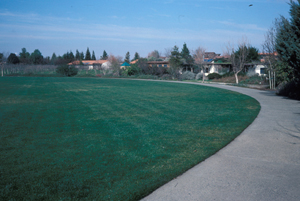 |
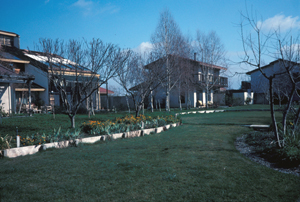 |
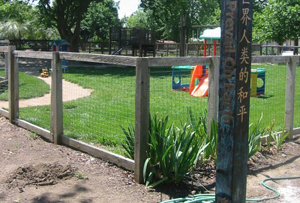 |
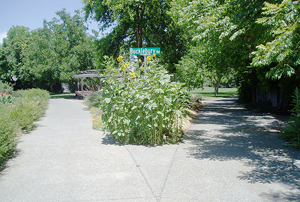 |
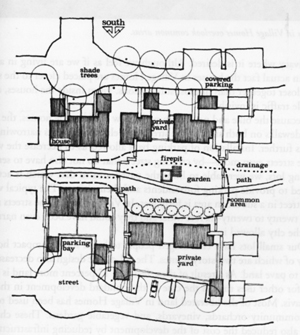 |
|
| Image Sources: |
| 1. Anne Whiston Spirn 1990 |
| 2. Anne Whiston Spirn 1990 |
| 3. http://daviswiki.org/Village_Homes |
| 4. http://www.flickr.com/photos/fiddleswithbikes/536981453/in/photostream/ |
| 5. Corbett and Corbett 2000, 37 |